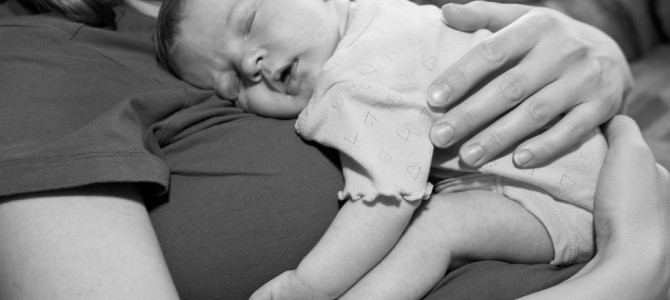While visiting some friends of mine who had recently given birth to their new daughter in a Manhattan hospital, I couldn’t resist perusing the institutional paperwork addressed to the “Dear Mother, Parent, Person Carrying the Child.” Such a salutation represents a new and worrisome trend where both the meaning and definition of motherhood is being challenged by the rise of reproductive technologies.
The rise of designer babies through the increased usage of “elite” donor eggs and sperm is practically old news. So, too, are reports of the miracle of birth being achieved through in vitro fertilization (IVF)—just recently NBC’s “Today” show featured a segment reporting on the birth of the first child conceived through a live, on-air IVF procedure. But the demand for donor or paid wombs is just now beginning to gain attention—even if it remains a rapidly growing enterprise.
While there is no mandated tracking of how many children are born through surrogacy each year, the Society for Reproductive Medicine estimates that 1,989 children were born through gestational surrogacy in 2012. Most news stories that cover the practice often focus on the gift of life provided by the surrogate to a couple, with the narrative always being one of praise for the surrogate’s altruism and the joy brought to the intended parents. Although these stories dominate much of the discussion, there are other stories that need to be heard—particularly from the surrogates themselves.
When a Mother Isn’t a Mother
Gail Robinson was in her forties when she agreed to serve as a surrogate for her brother and his partner. Gail relocated from her home in Texas to New Jersey with the agreement that the three of them would raise the children together. Due to her age, the group selected donor eggs, and on the first try she became pregnant with twins.
In a new documentary film, “Breeders: A Subclass of Women?,” Gail reflects on the early months of her pregnancy: “At the beginning, our relationship was good. We expected a happy ending.” Yet as the pregnancy continued, the relationship with her brother and his partner became increasingly tense as they placed enormous pressures on her. Gail had sold her house and her business to relocate to New Jersey—all under the promise that her brother and his partner would care for her as she prepared to become the mother of their children. Later in the pregnancy, due to the stress and friction, they would request that she have an abortion so that they could “get some other stupid female to have my children.” Today, Gail is the happy mother of twin girls—although she only has visitation three times a week. While she’s been legally declared to be the mother of her twins, she never imagined that this process would result in limited custody and that her motherhood would ever have to be decided and protected by litigation.
In a recent bill that aimed to legalize surrogacy in Louisiana (that was later vetoed by Gov. Bobby Jindal), the pro-surrogacy groups American Society for Reproductive Medicine and the Society for Assisted Reproductive Technology, opposed the bill for its use of the term “mother” instead of their preferred term: “carrier.” In the court proceedings following Gail’s case, the attorney representing her brother argued that the law simply needs to recognize some women as breeders. And as my friends in their Manhattan hospital discovered, those within the medical industry are now adopting such terminology in an effort to make legal distinctions between “mothers” and “surrogates.”
Separating Mothers and Children
Such reasoning, however, has consequences for both the surrogate and the child in question. For the nine-month gestational period, surrogates are reminded by health providers that they must care for the child as if it is their own—getting proper rest, receiving adequate medical care, and sticking to strict nutritional guidelines. In other words, the surrogate must care for the child as if it were her own because that child’s life depends on it—and it does. The surrogate must then be a mother to the child she is carrying because the child depends on her, and, in fact, knows no other mother.
Fast-forward to the delivery of what is hopefully a healthy child; in that moment the surrogate is no longer viewed or treated as a mother. The mother-child bond that is encouraged by the medical profession for proper development of the child during nine months of pregnancy is intentionally and very often dramatically severed. As psychotherapist Nancy Verrier has termed, both the mother and the child suffer a “primal wound” when a child is separated from the mother who bore him or her.
Surrogacy not only aids in this wounding process—but in states where it is legal, it institutionalizes that potential harm. Today a national debate around the merits of surrogacy is finally starting. Twenty-first century baby-making can create children in the laboratory through buying and selling eggs, sperm, and wombs. But achieving the possible has come at great peril—especially to the women and children involved.









